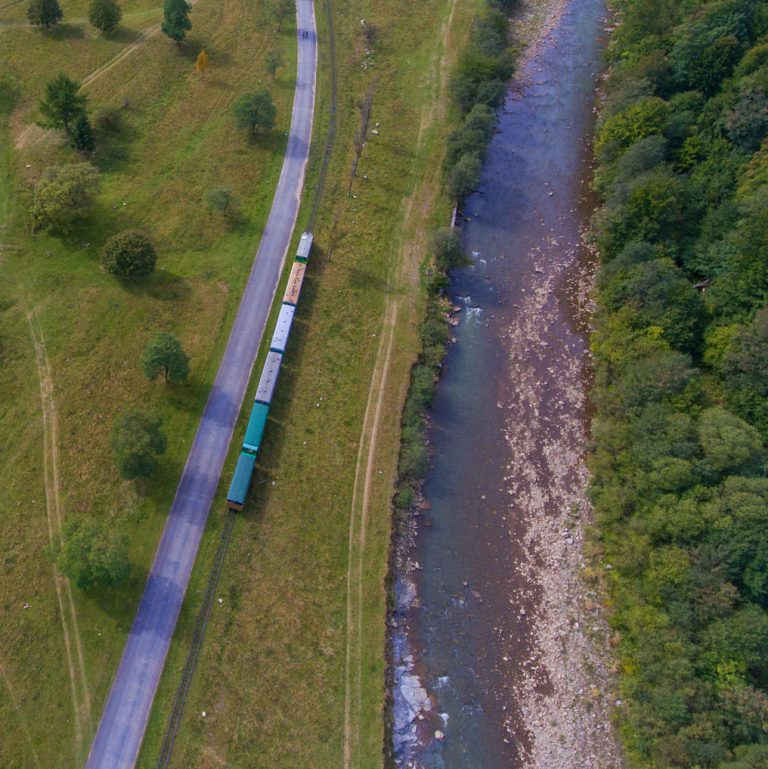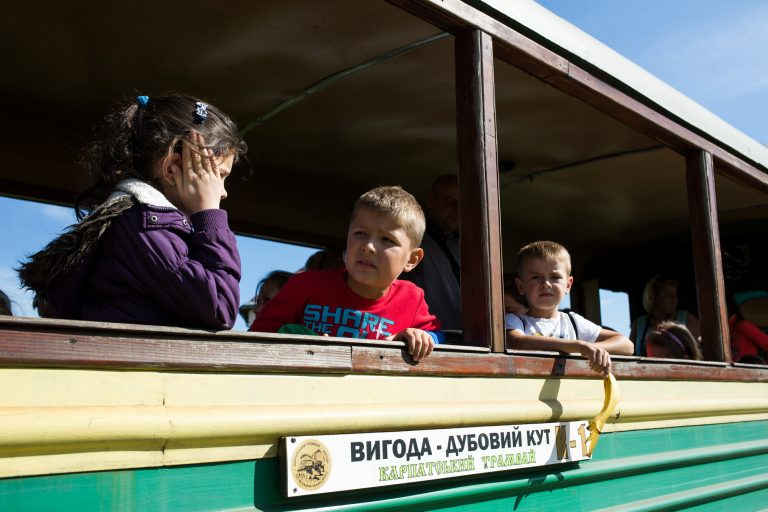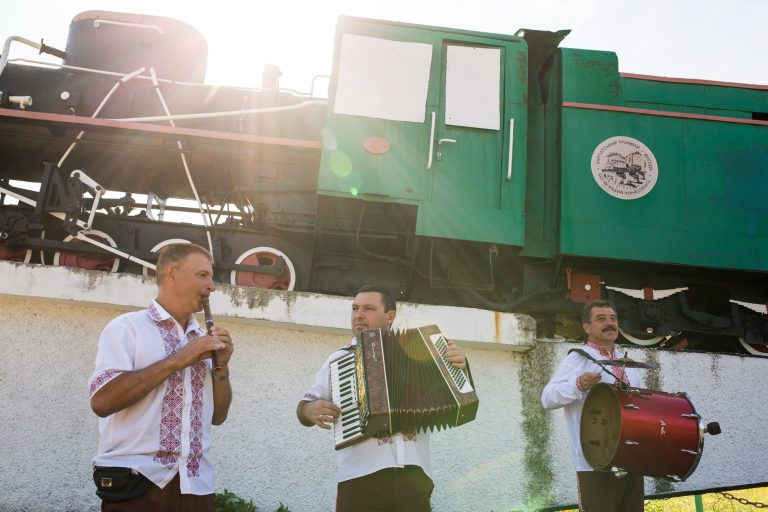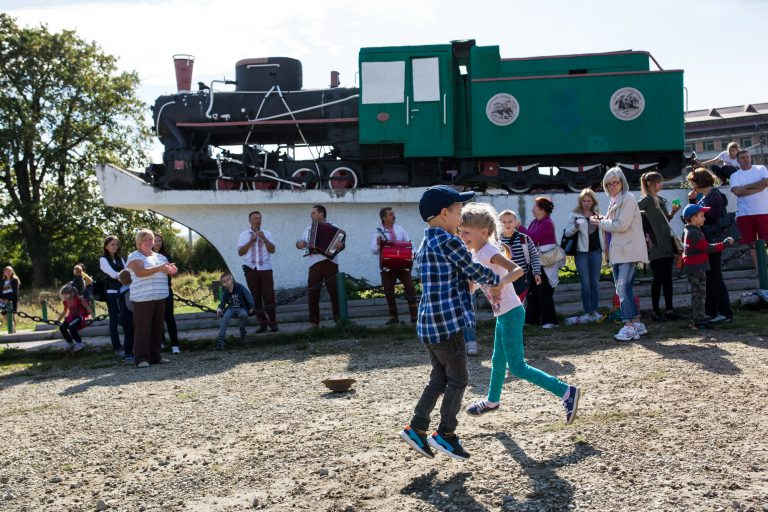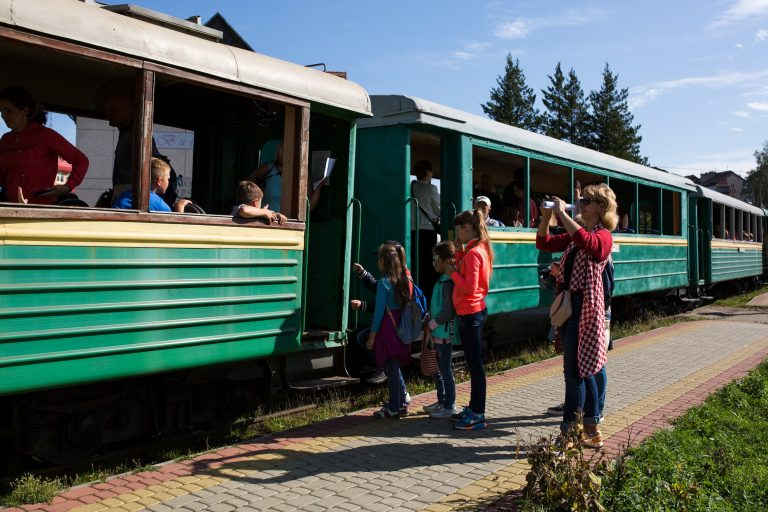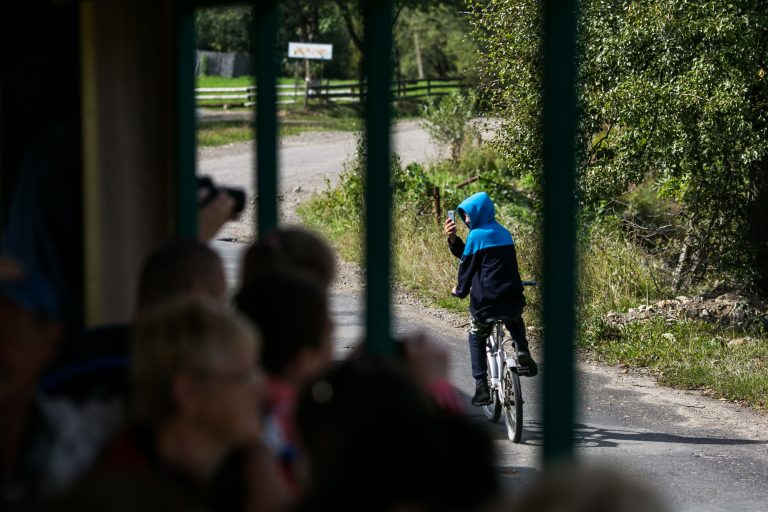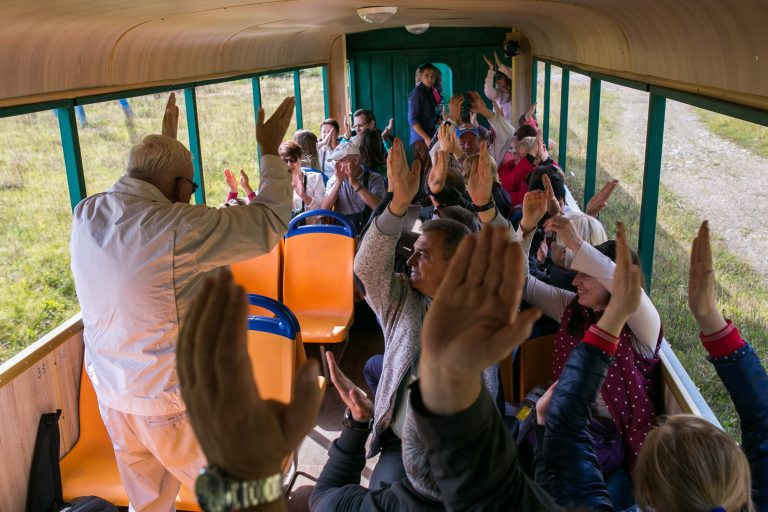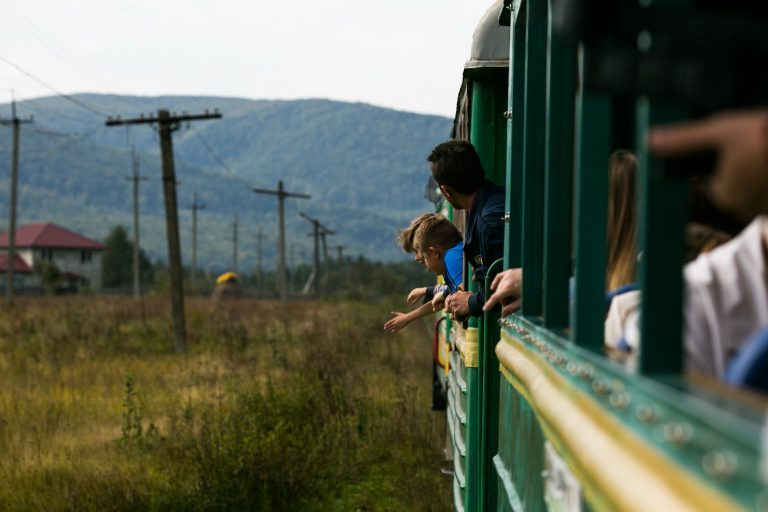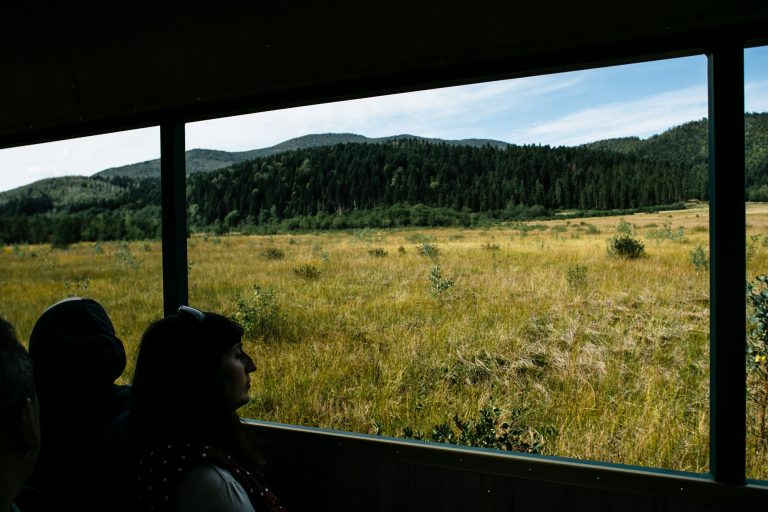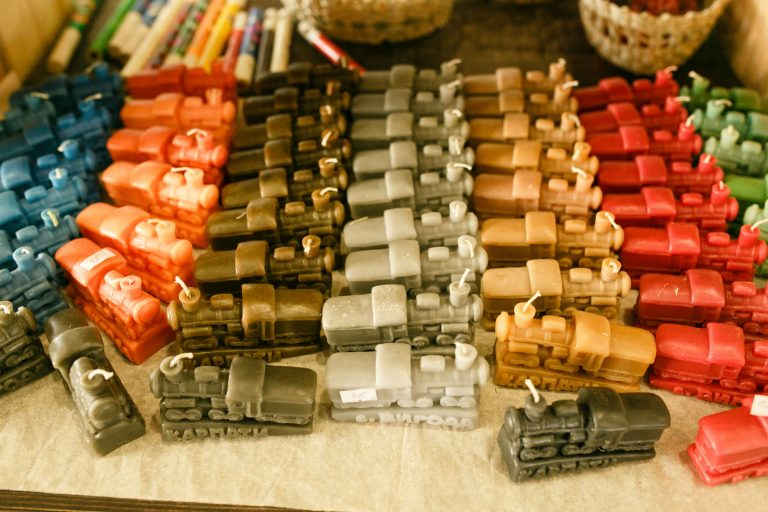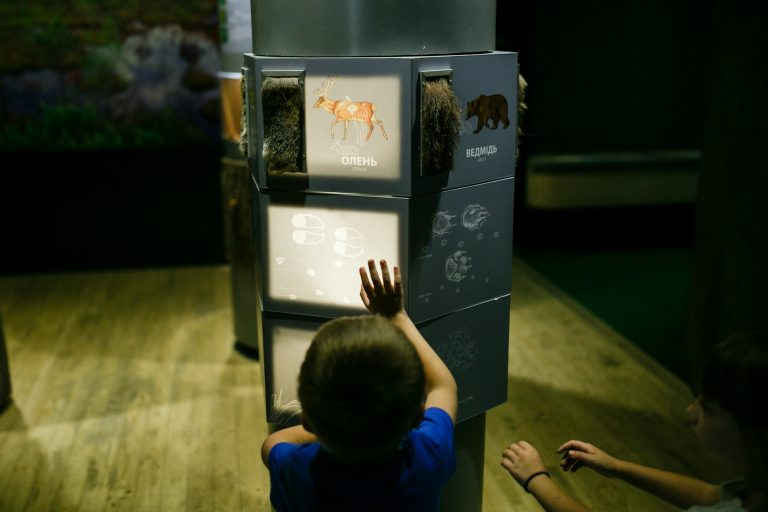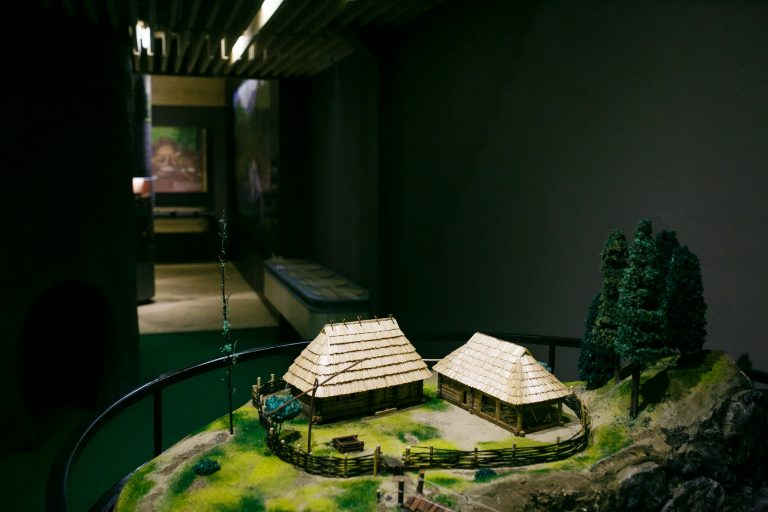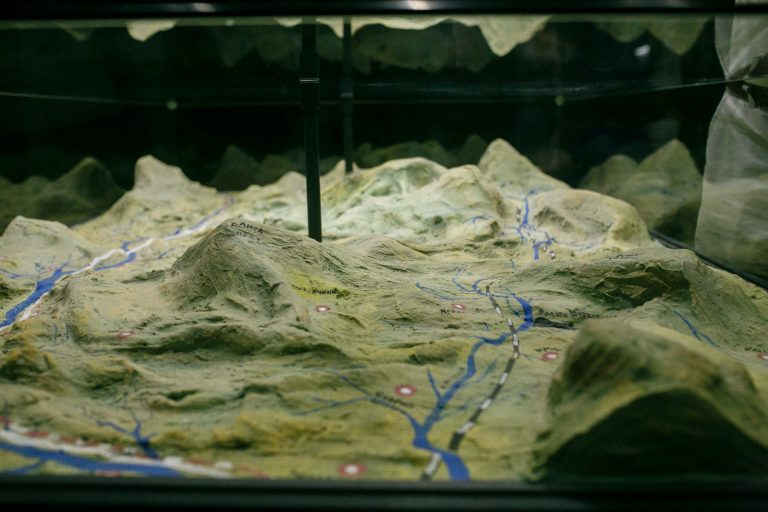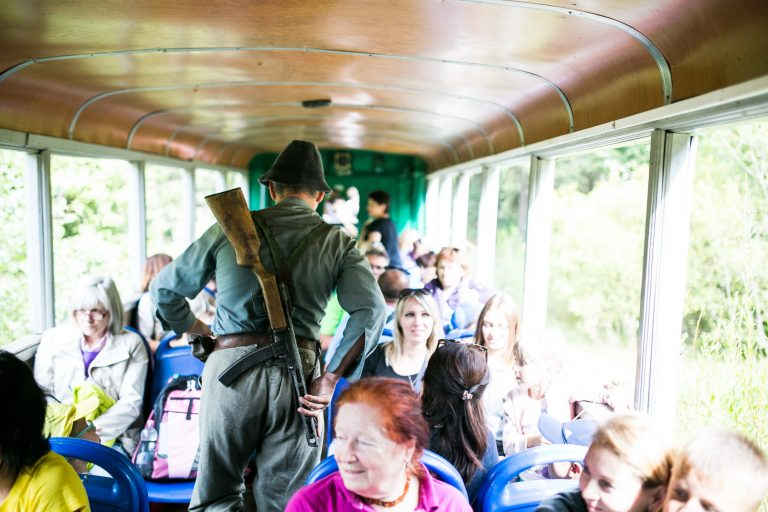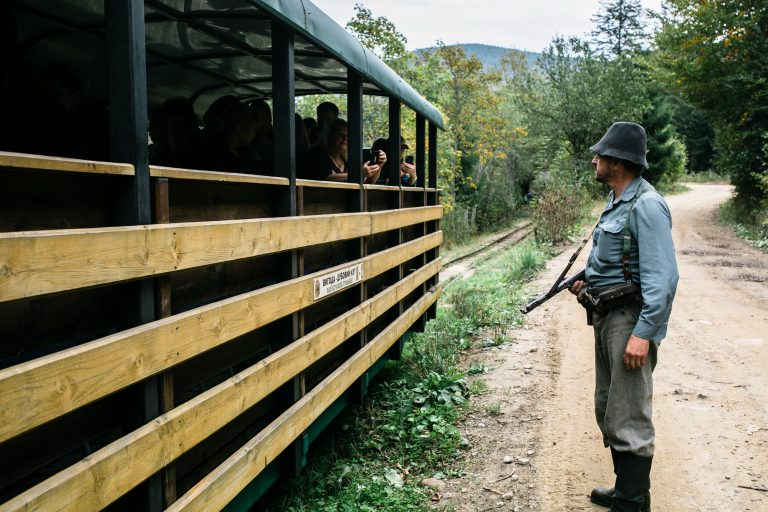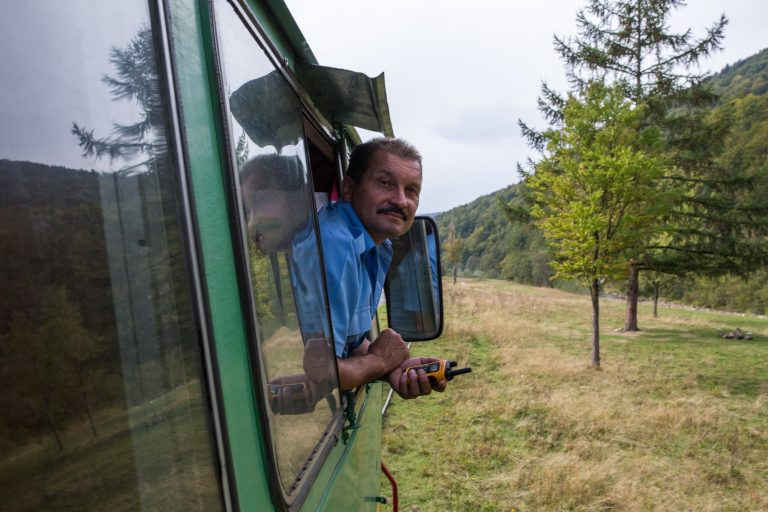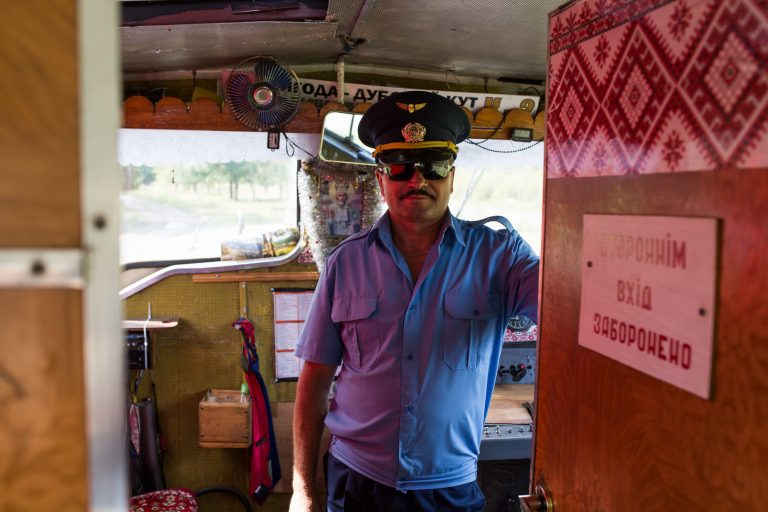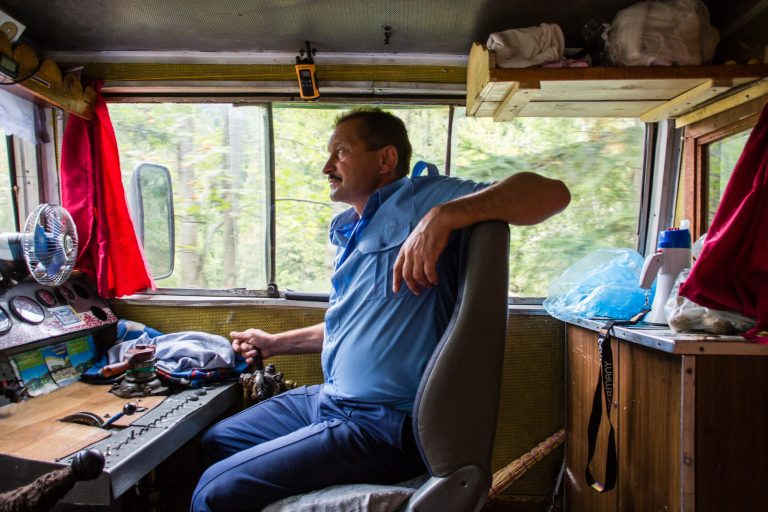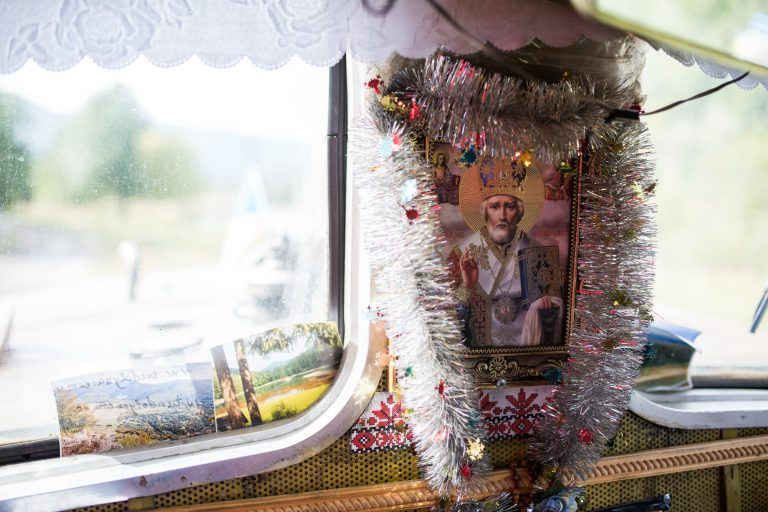For over a century, a Carpathian village Vyhoda with the population of 3.5 thousand people, has been a starting point of one of still existent unique narrow-gauge railways. Initially designed to serve as a means of wood transportation, narrow-gauge railway made it through two World Wars and was handed over from one owner to another. Meanwhile, it has become not just an industrial facility, but also a tourist attraction, which has given a boost to infrastructure of surrounding territories.
Good afternoon! Welcome onboard the Carpathian tram. My name is Dzvinka and I will be your guide for the whole trip. Let me brief you on some rules which must be followed during our journey. You may embark and disembark the tram only after it has stopped moving. The most important rule is to leave all your negative thoughts and emotions on this platform, so that they are gone with the wind, and let the good mood and positive attitude keep you company.
This is the start of a guided tour of the Vyhoda narrow-gauge railway, aka Carpathian tram. The route takes its beginning in Vyhoda and snakes through the mountains, across the picturesque Mizunka river.

From Austrian barons to Ukrainian tourists
The second half of the XIXth century was a period of industrial boost in the Austro-Hungarian Empire. Considering that Halychyna was a part of the former empire back then, it was also impacted by this process. Ukrainian Carpathian mountains were covered in dense forests. There was a substantial increase in demand for timber, which led to expanding areas of deforestation and timber supply. Consequently, it required new means of transportation.
In 1873, an Austrian baron Leopold Popper von Podhragy arrived in Vyhoda village and brought timber processing business. Hence, Vyhoda got a steam tartak (Tartak — timber mill — ed.), and Staryi Mizun got a timber factory. Popper launched the construction of the first narrow-gauge railway line in the Carpathians in 1890. The first stretch, which was 3 km long, joined Vyhoda with the factory in Staryi Mizun.
Due to the outbreak of the First World War, baron Popper was compelled to shut down his business in the Carpathians. He sold the narrow-gauge railway to a British, whereas from 1918 to it was a Polish company that was in charge of extending the construction of the railway further from Staryi Mizun across the Mizunka valley. The main line was extended to the Sobol boundary line.
slideshow
Besides the main line, there was a construction of the second narrow-gauge line. In 1913, Germans built a 21-kilometers-long railway line in the valley of Svicha river, which joined Vyhoda and Liudvykivka. However, the construction was shut down a year after. It wasn’t until 23 years later that the line was extended: it was 65 km long and ended with terminal stops “Beskyd” and “Svicha”.
After the Second World War, two narrow-gauge lines were merged into one, which triggered the construction of further branches. Back at that time, the Vyhoda narrow-gauge railway was as long as 180 km. Later on, the scope of timber harvesting decreased, and railway started to decay. By 1990, the length of rails dropped to 135 km. In 1998, severe floods completely washed away half of the routes.
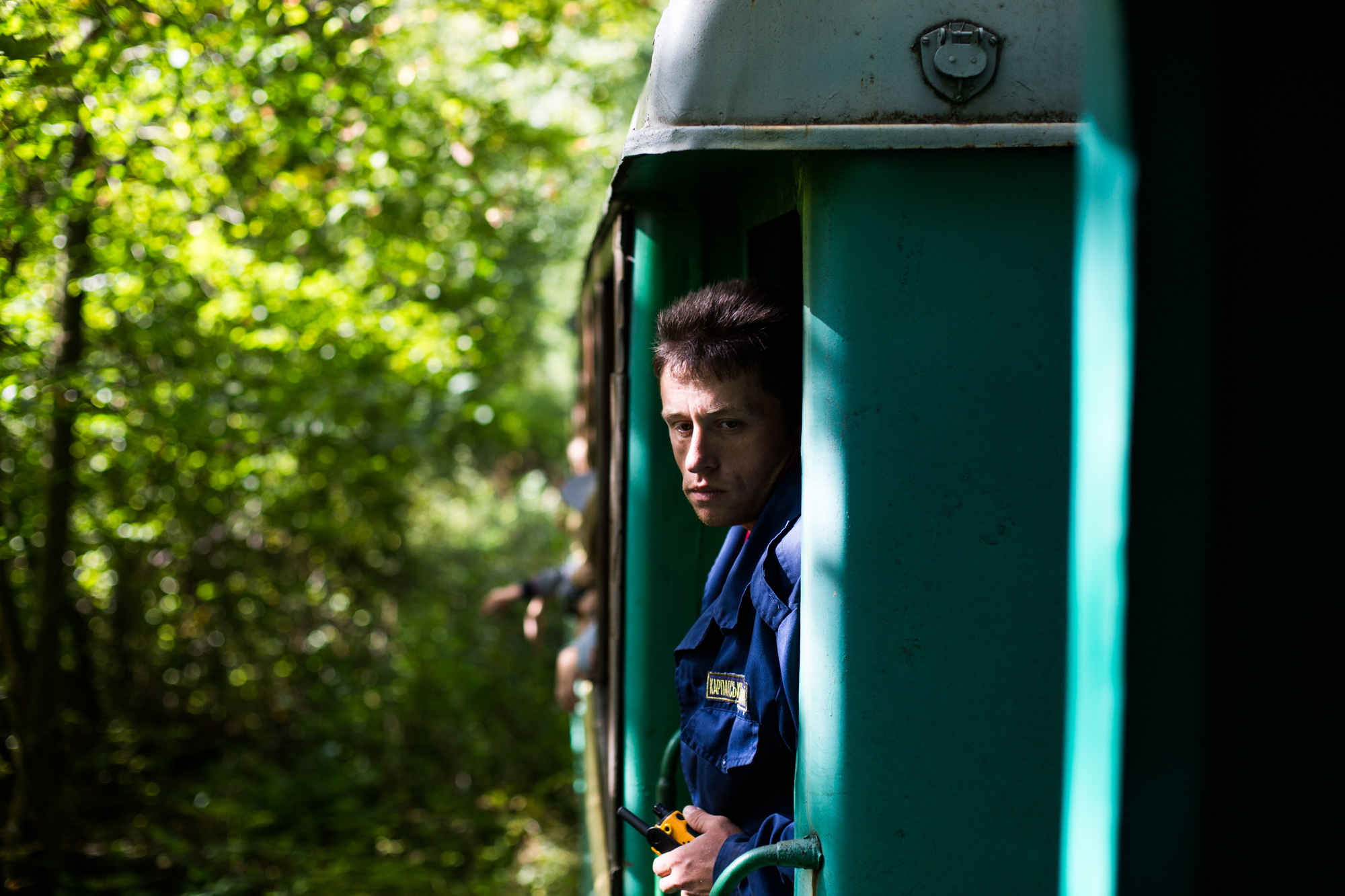
In 2000, “Uniplyt” company was launched in Vyhoda. The company founders had an intention to reclaim the status of Vyhoda as a timberwork village and to set up a fiberboard manufacturing factory. In order to produce fiberboard, they required timber harvesting. In order to harvest and to supply timber by means of transportation, they had to resume the narrow-gauge railways. At that moment, only seven kilometres of rails were in serviceable condition. The company managed to renovate 75 km. From that moment on, the line has been used by a cargo train and a train which carries timbermen. In 2003, the train was named the “Carpathian Tram” and ever since that it has been used for carrying tourists.
The fleet of the “Carpathian Tram” includes TU6P-0037 rail car, two passenger carriages and an open platform. The train is comprised of a locomotive with 12 seats for tourists, which offer a vantage point for observing the work of an engine operator, and 2 carriages: a closed carriage with comfortable seats and an open-top carriage, as well as an open platform.
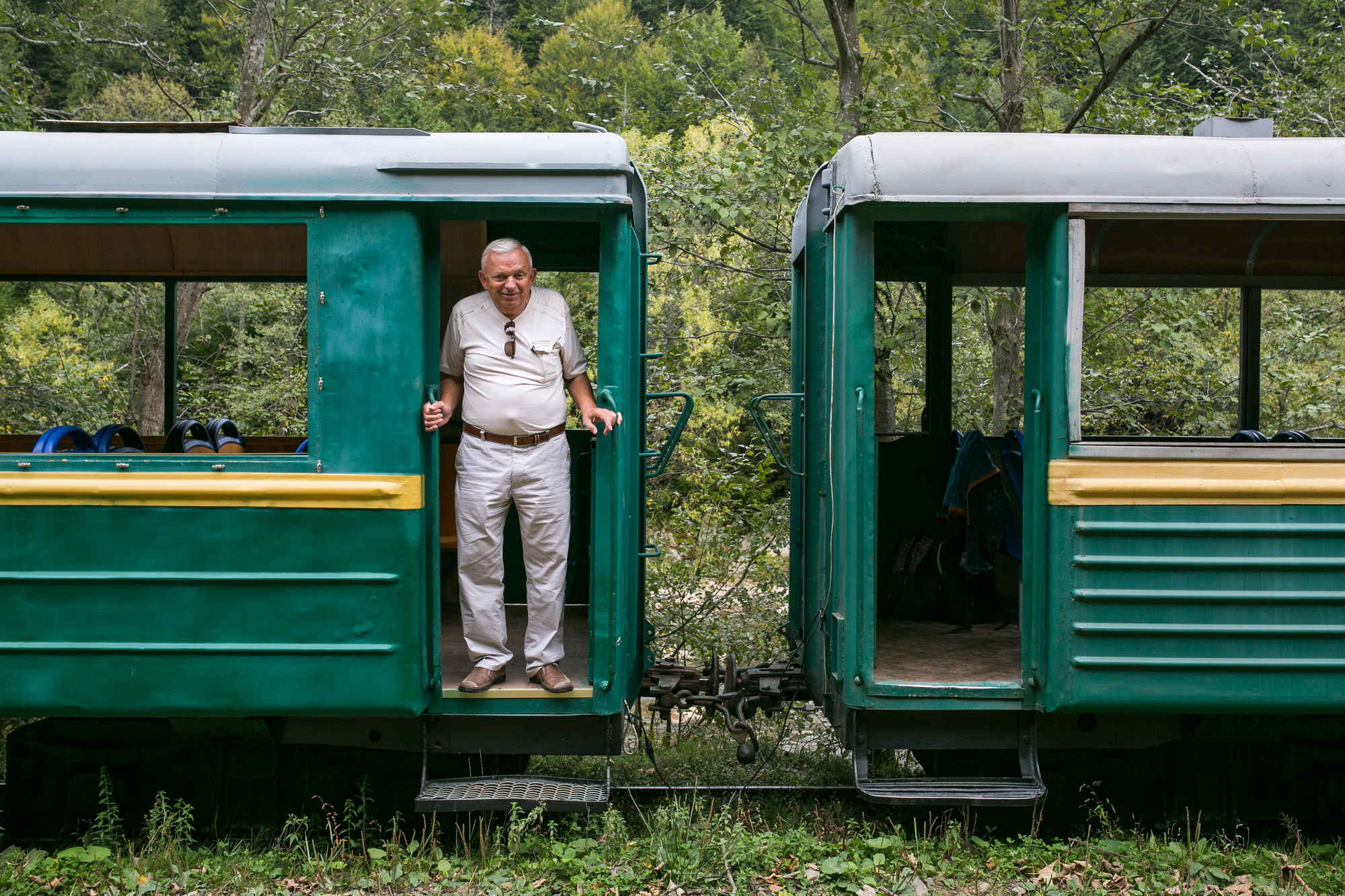
The first ride. Liubomyr
Liubomyr Yatskiv was among the first people who started to work in order to make the village attractive for tourists and began restoration of the narrow-gauge railway.
In 2003, Boikos (representatives of one of the Ukrainian ethnic groups) from all over the country joined for the Fifth Boiko Festival to show their traditions and customs, as well as to promote the authentic Boiko folklore and bring the national crafts back to life. Liubomyr, who used to work in the local state administration and was in charge of tourism, came up with an idea to arrange the first tour ride:
— Boikos from all over Ukraine came and told how great it was and that they had never seen anything like that. We started to elaborate on that. At first, there was one carriage, then another, followed by open-top carriages. We have significantly benefited from joining in the association with the other narrow-gauge railways, such as Romanian, Polish and Austrian.
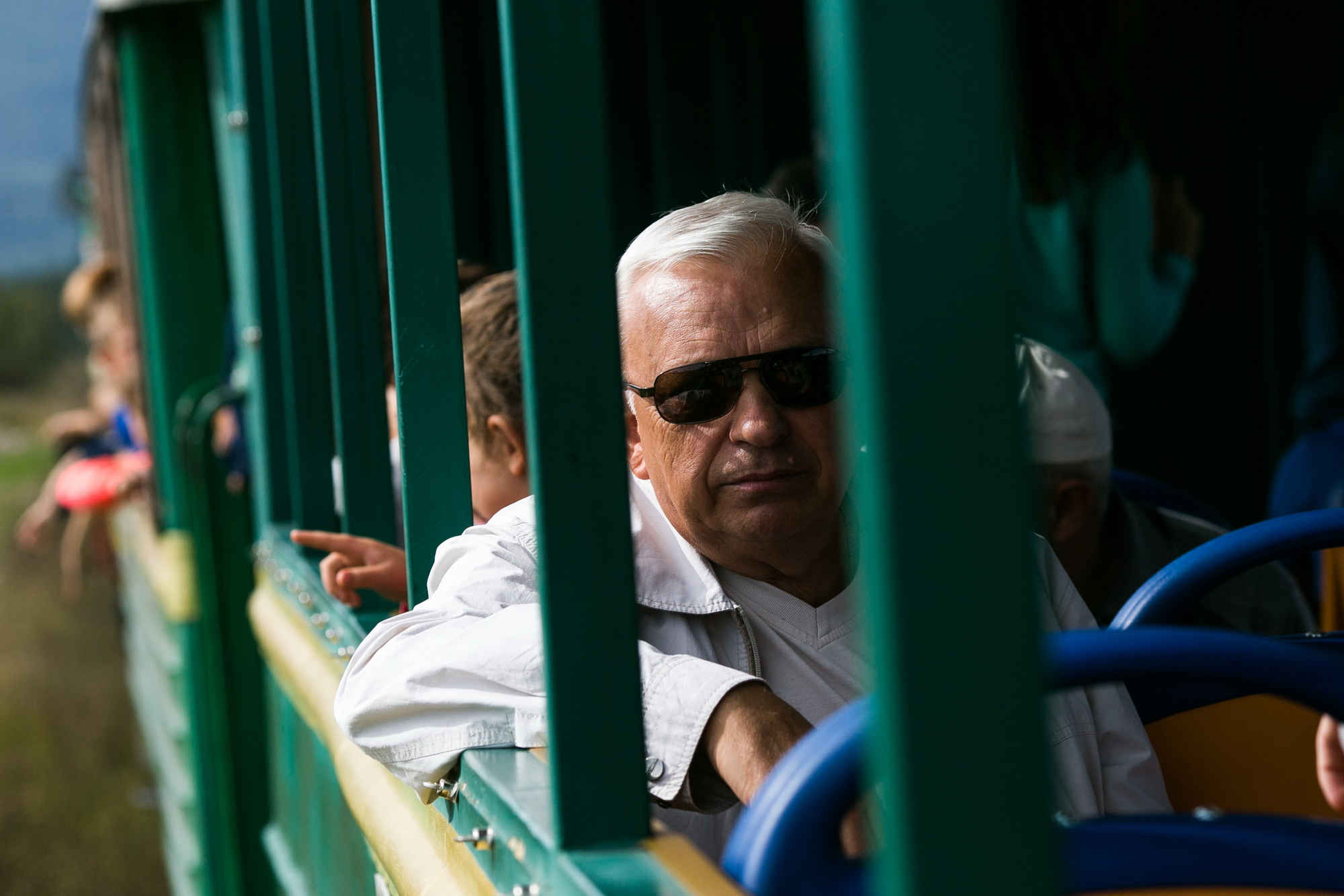
Liubomyr told that “Uniplyt” had been conducting random tourist rides, but they wanted to do it on a regular basis:
— Thanks to the cooperation with “Uniplyt”, we managed to fulfill our plans. Except for Mondays and Tuesdays, which are days-off, we are open the whole week and the whole year long. Just imagine: you are traveling by train in winter, with the 2 and 3 meters- high snow hills outside. The best time for transporting timber is winter. The narrow-gauge railway is cleared, and we concord our schedule with the «Uniplyt» company. The project is a part of the transborder cooperation program “Hungary — Slovak Republic — Romania — Ukraine”. It is aimed at preserving the historical and natural heritage around the narrow-gauge railways. We have both industrial and tourist routes. During these rides, we show people how timber is being cut and harvested.
Tourist rides are carried out every weekend. There are two options: a standard 4-hour ride from Vyhoda to the Dubovyi Kut and Mizun Waterfalls stops or a route across mountains, which lasts for 8 hours including stops. The latter route starts in Vyhoda and passes through Shyrkovets, Staryi and Novyi Mizun, Dubovui Kut, Solotvyno forest service, and Myndunok.
At first, the “Carpathian Tram” team was comprised of only two people, and now there are seven of them. Anyway, Liubomyr is concerned about the lack of human resources:
— For instance, six people have written their thesis on the topic of our Carpathian tram. Our tour guide Dzvinka is among those who defended their thesis. We even apply some of her ideas in our work. I think it is great that young people contribute to implementation of new incentives. As of now, professional training is provided only in Lviv. I mean brynzars. This is a problem, because those who used to drive the train are about to resign. But I believe there is a solution. Last year, we commissioned one man, and “Uniplyt” commissioned two people. This year, we also intend to commission people for training. For now, it is not a traditional profession, but I believe it will become such.
Brynzar
A person responsible for safety procedures in a train and operators.slideshow
A weekly passenger flow of the Vyhoda narrow-gauge railway is 500–700 people. When the route was just launched, there were about 300-500 passengers, and now this number has reached 20 000. As a joke, Liubomyr told that the number of passengers who have been carried by the railway will soon be ten times greater than the population of Vyhoda.
— This is a unique route. Now, the “Carpathian Tram” is the main tourist attraction. It impacts the trade, the lifestyle and even the museum. It serves as a place where people can have rest.
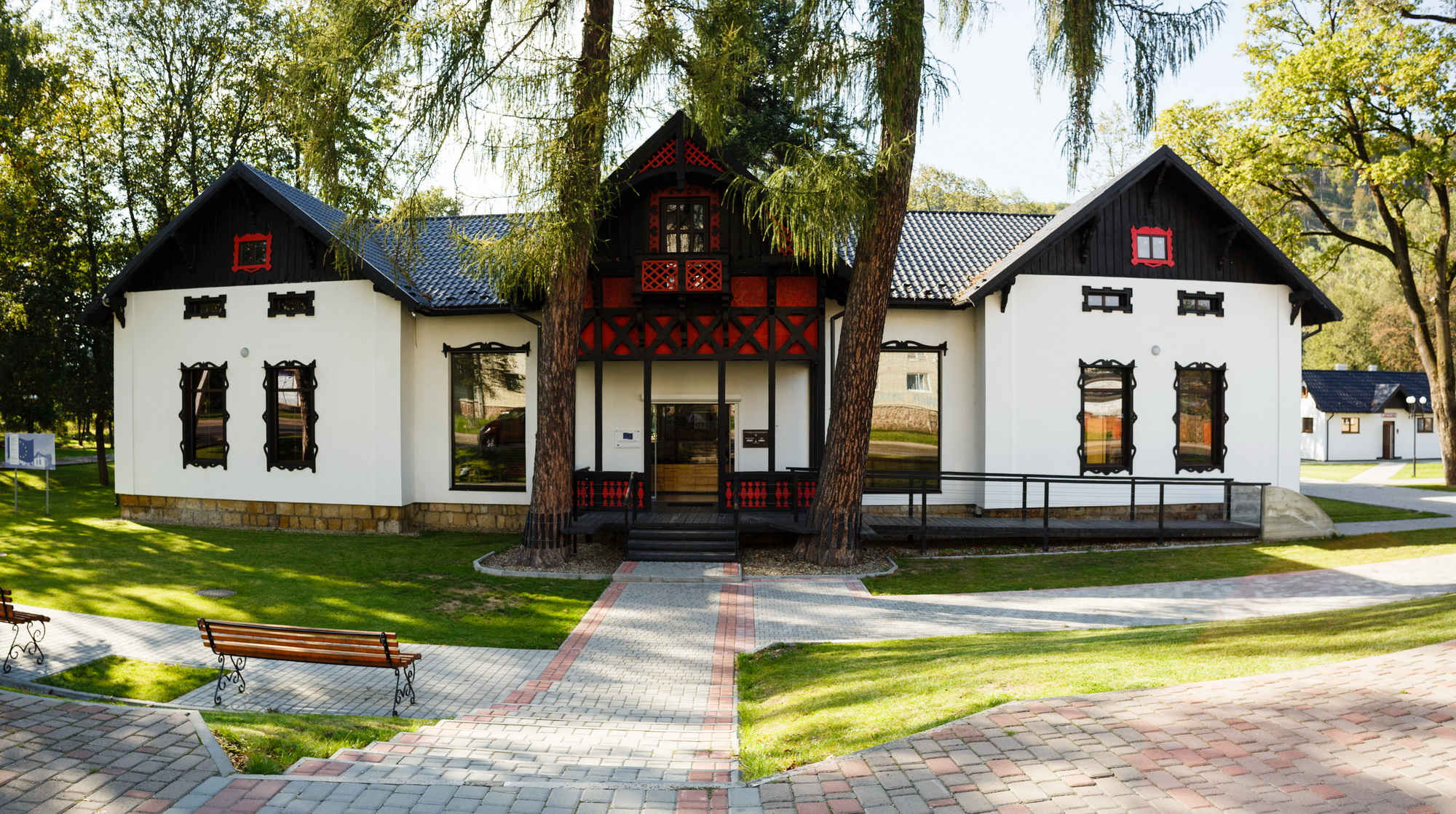
Center of Vyhoda narrow-gauge railway heritage
In April 2016, there appeared a museum, unparalleled in Ukraine. This bright and light two-storied building, which used to be a residence of baron Popper and one of the oldest buildings in the village, is an interactive museum of Vyhoda narrow-gauge railway now. You are not only allowed to touch the exhibits, but you are strongly advised to do so, as each exposition requires interaction. You can easily get into a fox habitat or a tree hollow, or even drive a train.
Visitors get to know the history and nature of the land, in particular, timber processing tartak (mill); they also learn about the life of ethnic Boikos, their culture and traditions.
The credit for the museum goes to Oksana Fedorovych, the representative of Ivano-Frankivsk tourist association, who has designed the project and won a grant for the village. This is a shared project of association and village council.
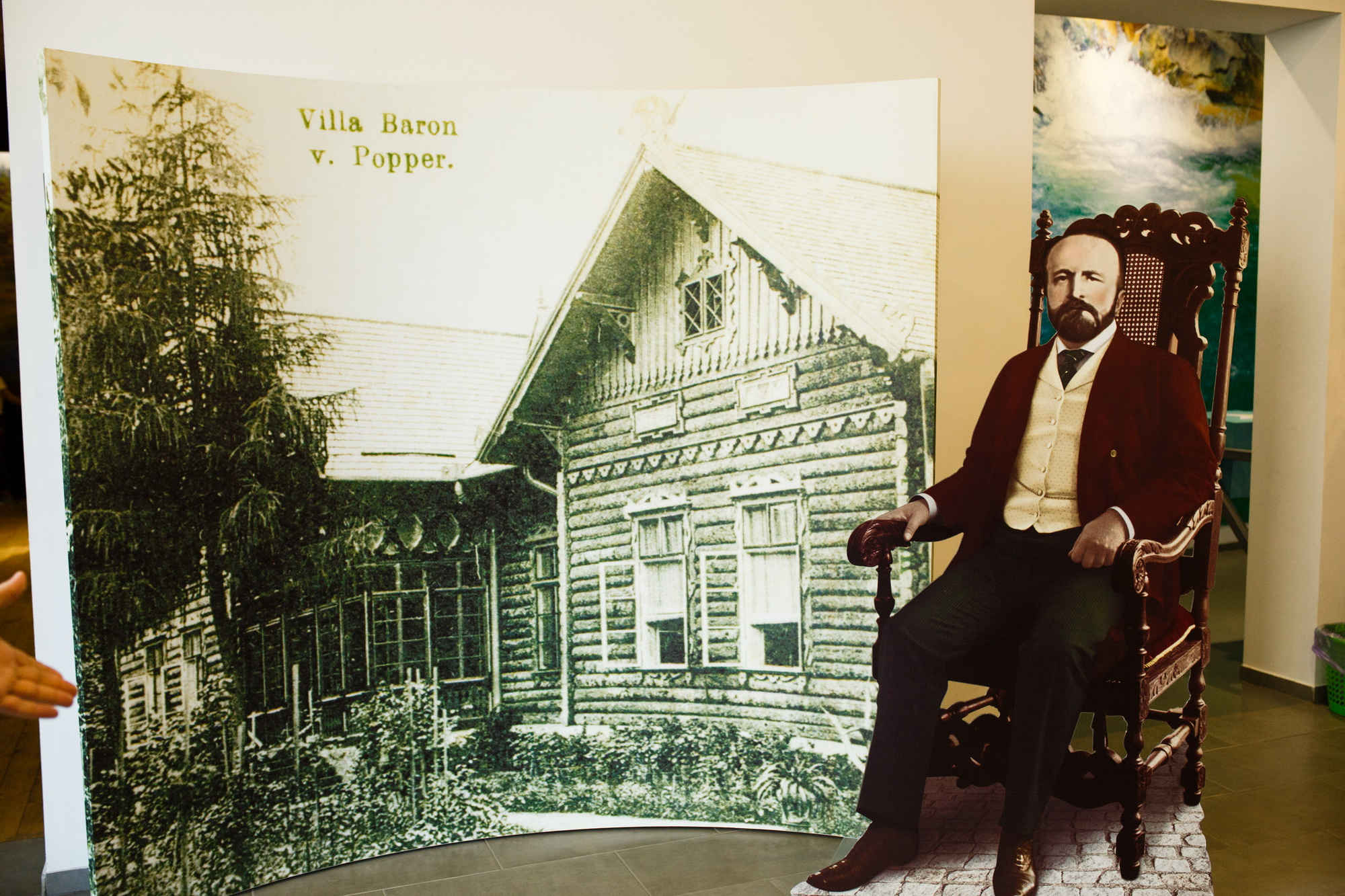
Thanks to Oksana Fedorovych, they managed to unite three projects: restore the baron’s mansion, open a museum of Carpathian flora and fauna and join it with the narrow-gauge railway museum. It took three and a half years to finish the work.
— The place was in ruins. She (Oksana Fedorovych — author) did everything from scratch. It was difficult.
Museum’s visitors have a possibility to watch a unique movie about the history of Vyhoda narrow-gauge railway.
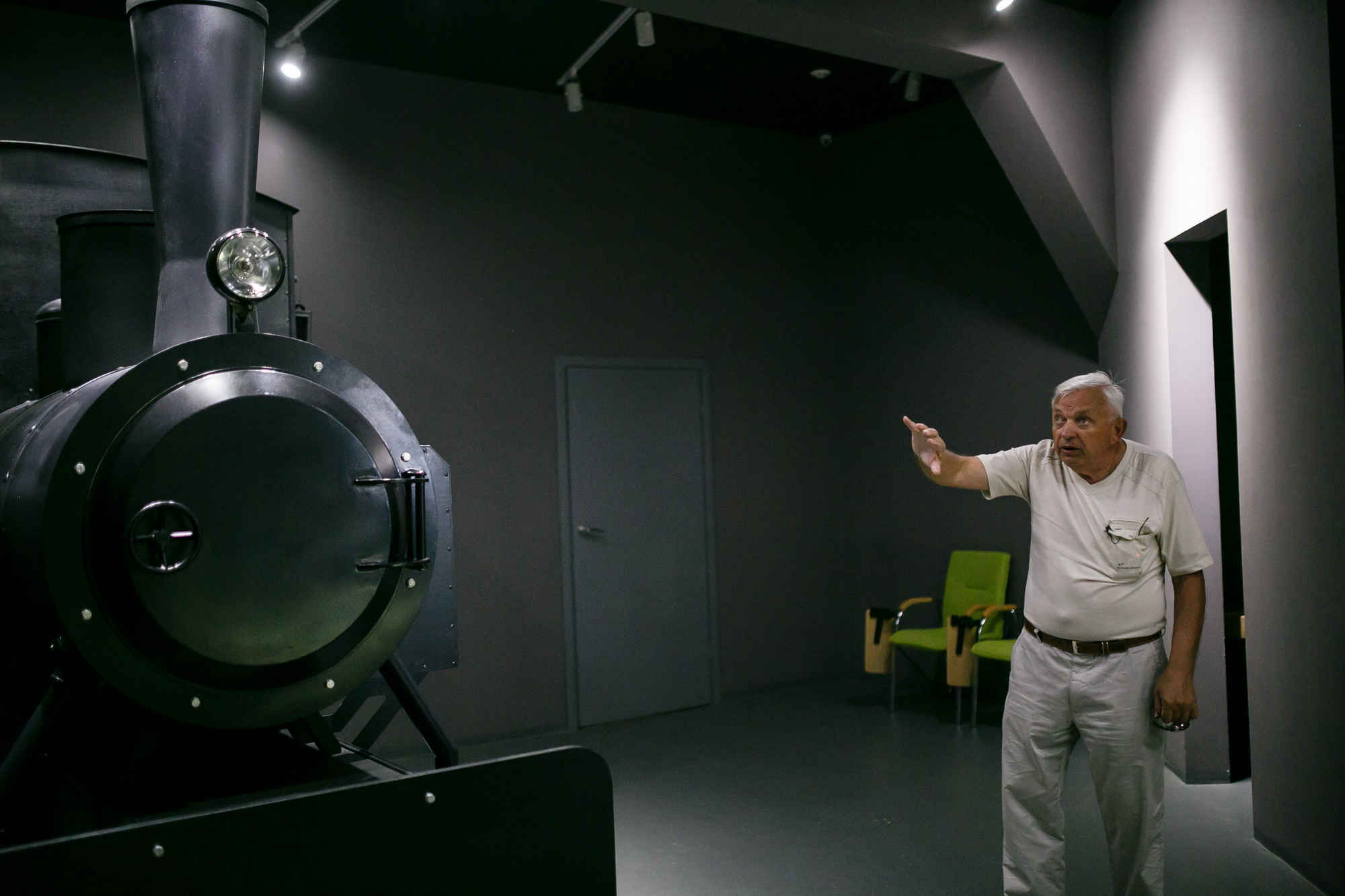
Prior to working in a museum, Serhii Andrusiak worked as a lawyer in the village council. He provided legal support for the museum project and then became a project counselor:
— I liked this tourism. I hear “thank you” every day. People really express gratitude for our work. It is not so common when talking about other jobs. People are excited, and children say this is the world top museum. We have a feedback book and a board where everyone write their wishes.
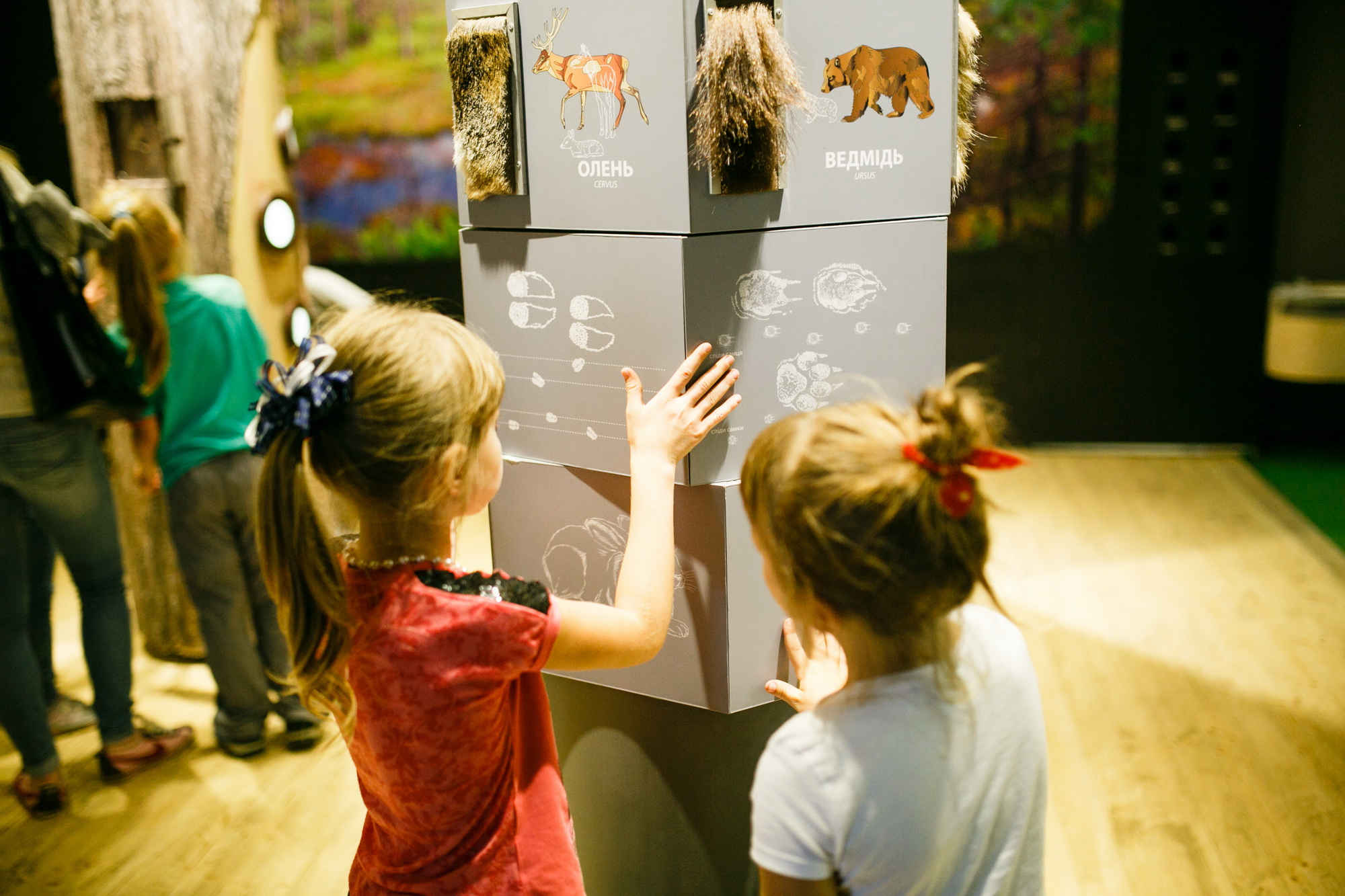
Museum exposition is the result of work of Oksana Fedorovych. Liubomyr and Serhii express their admiration:
— We wanted to start up a project of restoring the narrow-gauge railway and a museum of railway attributes, but we had no money. No one would invest money into private companies, such as “Uniplyt”. And then there she was…There was nothing she could not do. She took on this project, cut the budget to half a million euros, but she managed to open both a narrow-gauge railway and an interactive museum.
slideshow
One of the most frequent visitors of the museum are children, and not only because they can touch everything with their own hands, but also thanks to the designed projects. On the premises, they have eco-classroom, which is a part of the Finnish project. They have purchased special books for children, designed exercise-books; microscopes and binoculars are also available. Children are taught how to recycle. Serhii Andrusiak and the team strive for conducting Biology lessons at this place:
— Most of the time, children spend outside, in the park. We have chairs to take with us. They can also be used during hikes. We have purchased large powerful binoculars, which can be used for birdwatching; microscopes, which we use to study the structure of plants.
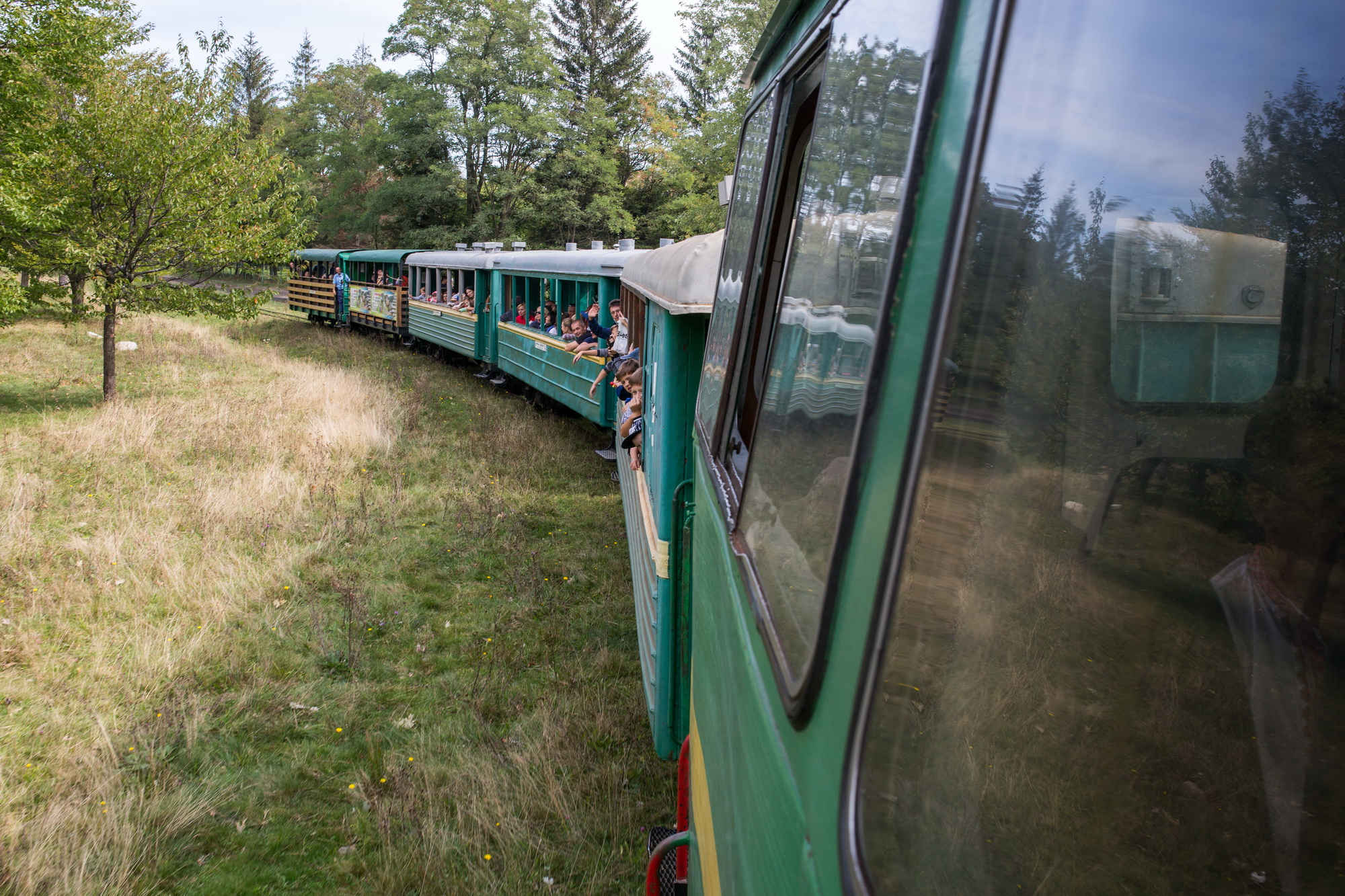
Besides the narrow-gauge railway
Earlier, tourists who would come to have a ride on the Carpathian tram did not stay for long, but things changed when the museum was opened. Actually, it is the museum that lets them stay longer.
In the center of the village, there is a gift shop which sells goods made by local craftsmen. There is also a workshop where souvenirs are produced:
— Our primary task is to attract as many tourists as possible to our village. They provide our income. In such a way, we pay a part of the income into the village budget. The wealthier the village, the more people will know about us. We would like to take part in other projects, to grow.
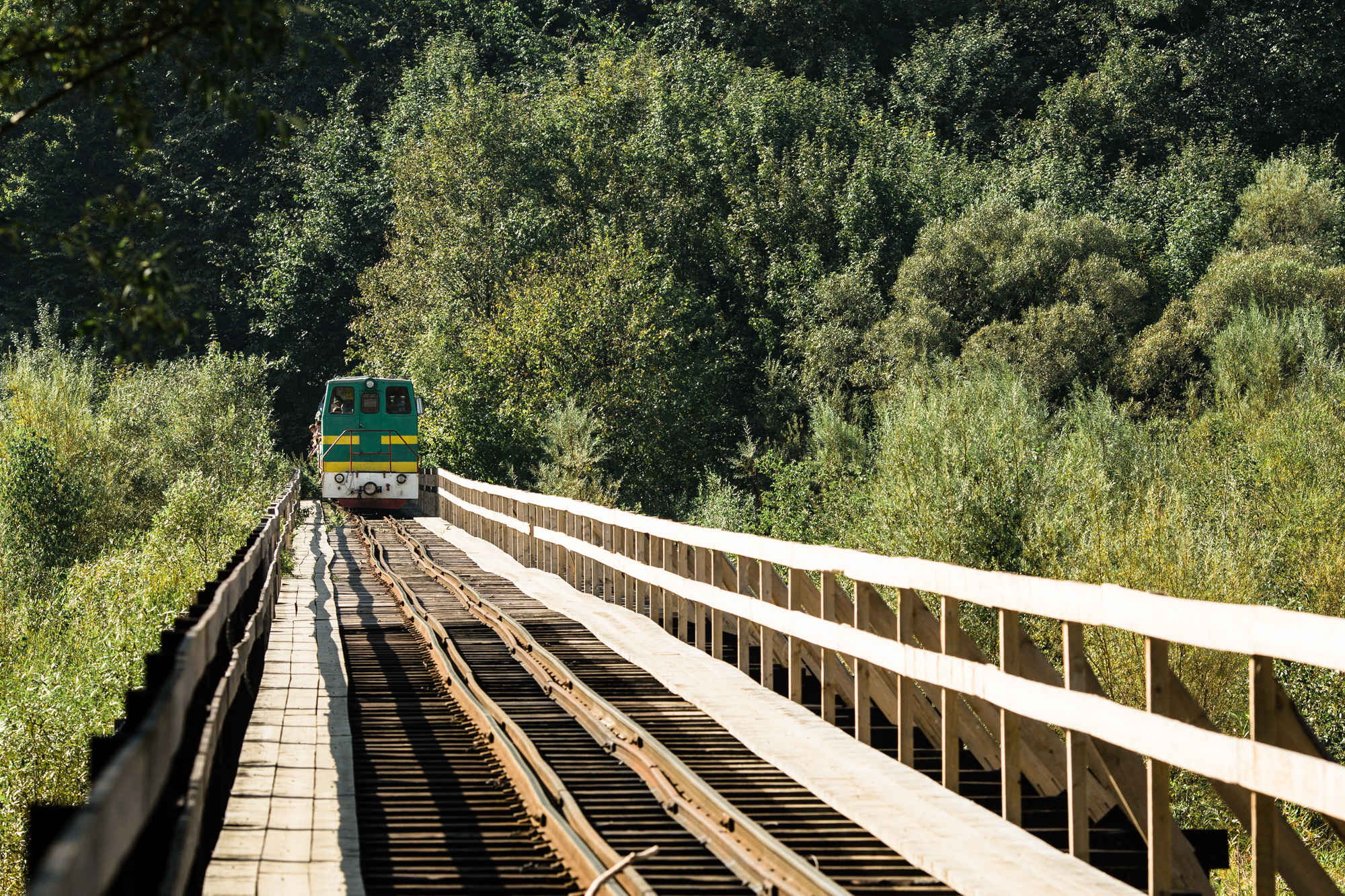
Liubomyr Yatskiv intends to restore the old health retreat and turn it into a hotel:
— Well, I suggested opening a hotel, like they do abroad, instead of a health retreat. The hotel would provide professional services, such as services by certified massage therapists. Now, it would be difficult to get a license for the health retreat, and maintaining such retreat is considered outfashioned. On the other hand, staying in a hotel allows you to do whatever you like: you arrive, check in and then do as you like, be it mushroom picking, staying in a room with your partner other for 5 days, getting a massage, or enjoying a therapeutic bath.
slideshow
Nevertheless, the “Carpathian Tram” still remains the main tourist attraction. Besides the breathtaking views, there is also a special theatrical guide tours, which involve lots of singing, story-telling and joking.
The train crew is well-managed and work like a charm. On average, the crew is comprised of four people: a train master, a tour guide, a brynzar (a person responsible for security) and an engine operator.
slideshow
Oleh has been working as a train master and a senior tour guide almost from the very beginning of tour rides. Liubomyr invited him into a team when the tours were designed:
— I had already started looking for people to work with, because first comes the engine, then the driver. I am extremely happy I’ve met him.
The “Carpathian Tram” also boasts a music band:
— We want to instill our genuine Ukrainian music, of the Boiko origin, into people. There are those who come from Donetsk, Dnipropetrovsk or even Chernivtsi. They ask, “Would you sing a Ukrainian song for us?”
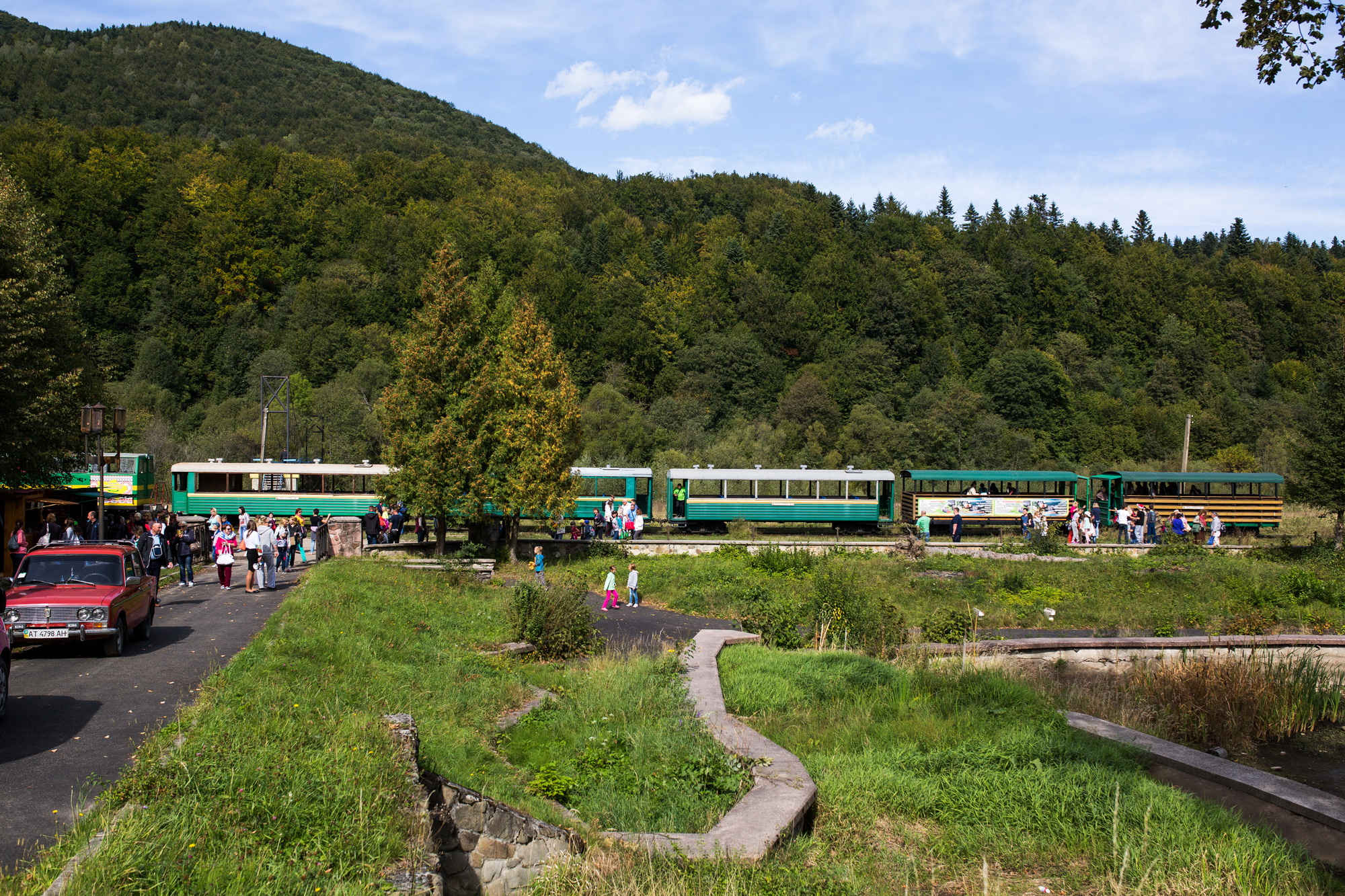
Another peculiarity of the Carpathian tram is a song “Starenkyi tramvai” (“An Old Tram”) by “Pikkardiiska Tertsia” band, which was written for this very route. Band members were inspired after their ride on a narrow-gauge railway.
The “Carpathian Tram” is open all year long, and tourists come in flocks:
— We have signed agreements with tour operators of Truskavets, Morshyn, Lviv, and Vinnytsia. Moreover, we have many visitors from Belarus, Austria, Poland, and Germany. In such a way we tell about our Boiko land to the whole Europe.
How we shoot
Watch our journey to the Carpathian narrow-gauge railway in Vyhoda, followed by a quick stop by a Skole Beskids National Park, where new trees are planted.

